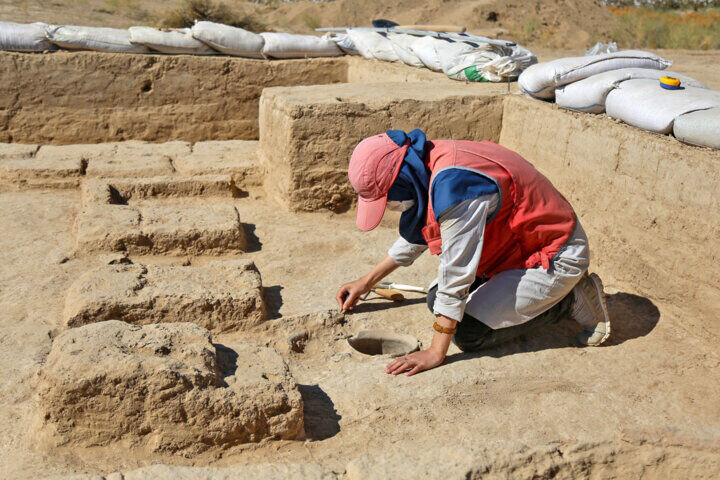Excavations resume at ancient Viranshahr

TEHRAN - The sixth season of archaeological excavations at the ancient site of Viranshahr, northeast Iran, has resumed, promising to shed new light on the region’s rich history.
“Conducted by an expert team, this project continues to uncover significant architectural remains dating back to the Seleucid and Parthian periods,” said a local official in charge of cultural heritage, on Sunday.
The archaeological excavations in Viranshahr, Mohammadreza Qahramanian underscored, commenced in 2019 following a memorandum of understanding between the Iranian Research Institute of Cultural Heritage and Tourism and the Louvre Museum in Paris.
The official further elaborated that the series of field surveys are led by Meysam Labaf Khaniki and Rocco Rante, and over five seasons, significant findings regarding the architectural remains of the site have been uncovered.
The Viranshahr site, he added, was first identified and introduced in 1976 during an archaeological survey of the Atrak valley, led by Roberta Venco Ricciardi from the University of Turin, Italy.
Shedding light on the previous findings, Qahramanian explained that the 14-hectare site was originally enclosed by a defensive wall, with an additional enclosed area in its northern corner, likely serving as a citadel and residence for the settlement’s rulers.
“During the fifth season, excavations revealed that the architectural remains on the Viranshahr mound included a building with a wide iwan, measuring 12 meters in width, and a large area behind it, surrounded by a corridor,” he noted, adding that this layout reflects a distinct architectural pattern seen from the Seleucid and Parthian periods, spanning from Khwarazm and Transoxiana to the Iranian Plateau and Mesopotamia, previously identified in religious or aristocratic structures.
The historical site of Viranshahr is located approximately 10 kilometers north of Faruj city in eastern North Khorasan province.
This region, housing the sources of the Atrak river, has long been of interest to human societies. The passage of one of the major east-west communication arteries through this area has further enhanced its historical and cultural significance
XF/AM
Leave a Comment